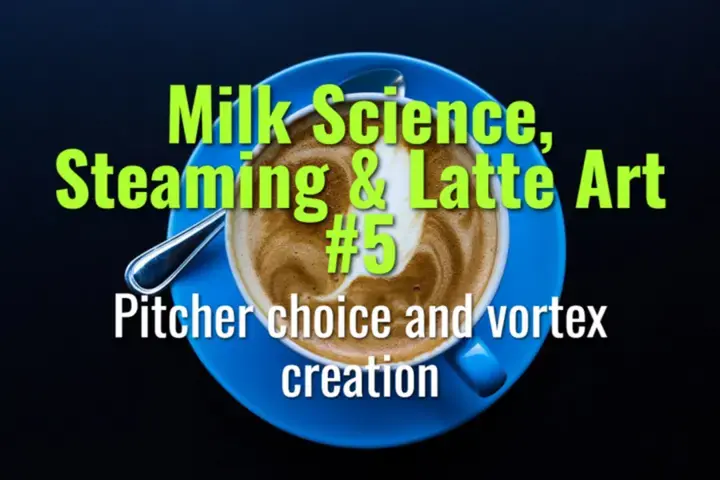Pitcher choice and vortex creation
How milk pitcher design influences steaming, vortex formation, and latte art performance.
- Coffee Basics Nerds
- 2 min read
Article 5 of 12 in Milk Science, Steaming & Latte Art/

Pitcher Design Factors
- Material: Stainless steel is standard for durability and heat transfer.
- Wall Thickness: Thinner walls heat faster but retain less; thicker walls provide better stability.
- Size:
- 12 oz (350 ml) for single drinks.
- 20 oz (600 ml) for doubles or larger.
- Spout Shape:
- Rounded spout → best for free-pour latte art (hearts, tulips).
- Sharp spout → better for detailed etching and rosettas.
Vortex Creation
- Goal: Generate a whirlpool motion during texturing phase to integrate air into microfoam.
- Pitcher Shape: Tapered sides and rounded bottom promote smooth vortex.
- Technique:
- Wand placed near pitcher wall, tip slightly below surface.
- Steam introduced at an angle to spin milk in circular motion.
- Consistent whirlpool breaks large bubbles and polishes texture.
Ergonomics
- Handle design should allow comfortable grip and wrist rotation.
- Weight balance matters for precise pouring control in latte art.
Practical Tips
- Use the right pitcher size for the milk volume—too large leaves excess space, disrupting vortex.
- Rinse and chill pitcher before steaming for better microfoam control.
- Dedicate separate pitchers for dairy and alternative milks to avoid flavor contamination.
Summary
Pitcher choice strongly affects milk texturing and latte art. A well-shaped stainless steel pitcher enables smooth vortex creation, which polishes microfoam and ensures silky milk. Proper spout design and size also support precision and creativity in latte art pouring.